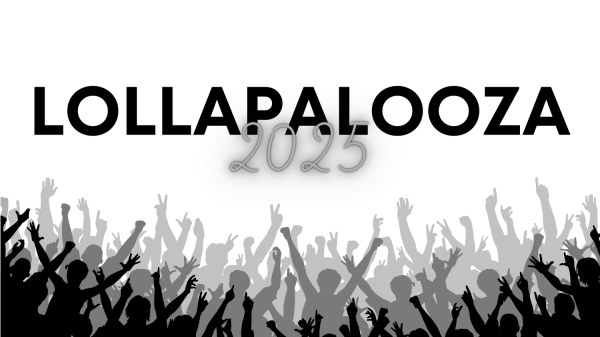How to use pronouns

For my pronoun pins, as I like to use they/them and she/her interchangeably, I got two pins (if I have a preference on the day I am wearing them, I will only wear one pin instead of two).
A Brief Introduction:
Pronouns are a part of speech most commonly used in a vague reference to nouns, and the majority of the time are used to reference people. They can be everything from “me”, “you”, “myself”, “yourself” to “who” and “whom”, and the most commonly known “he”, “she”, “they”, as well as plenty of alternatives. This article will be focusing on the latter group, most commonly known as direct pronouns.
Using Pronouns
Everybody you interact with has direct pronouns. However, pronouns aren’t something that you can automatically know about someone upon first seeing them, nor based on their gender. I like to think of pronouns in a similar sense to clothing. When it comes to gender- pronouns should make their subject feel comfortable and can be used to express gender, but they don’t have to.
It’s a good rule of thumb to provide your pronouns if you are interested in knowing someone else’s. In speaking, it is often the most helpful practice to offer pronouns in an introduction, especially if you will be asking someone else their pronouns. For example, if Ella is introducing herself, she could say: “Hello, my name is Ella and I use she/her pronouns” before asking the other person’s pronouns.
An alternative to letting people know your pronouns in person without verbally saying them are things like pins, often sold by small businesses. Having a pin on a bag or on your shirt can be a subtle but effective way of telling people your pronouns. In digital contexts, it’s significantly less common that you will have an introduction like that, but pronouns can still be important.
One way that people will let others know their pronouns in this context is to put their pronouns as a line in their biography on a social media page. Currently, the people doing this are often only transgender people and those that support them, but the more normalized it is that people share their pronouns, the safer space is created overall.

People will write and refer to pronoun sets in different ways, each having its own pros and cons. Ella from earlier might list her pronouns like she/her, but her friend Megan might choose to say her own pronouns like she/her/hers.
It is most common for people to use either the two or three most common forms of the pronoun sets they identify with when describing themselves, although some will even go from one up to five as there are often five different ways to use a single pronoun set.
There are some instances where a single pronoun set doesn’t feel like it covers a person’s identity. In this case, a person might choose to use two or more sets of pronouns. For example, I use she/her and they/them pronouns, which I typically shorten down to she/they. Any two or more pronoun sets can be combined, even if their “traditional” uses are very opposite, like when someone will use he/she pronouns or vice versa.
Furthermore, there are times when three pronoun sets are combined, which can also be written as “any pronouns”. When people use multiple sets of pronouns, the way they state it can indicate a preference of pronouns, but it doesn’t always. The preferred of the sets will come first, followed by the ones that aren’t preferred. Others like the sets evenly and the way they write their pronouns has no indication (if you are unsure, it’s better to ask the person privately rather than assume).
A preference doesn’t mean that you shouldn’t use both sets to refer to that person, it means that if they were to be referred to multiple times by one person and that person was indeed switching between the sets of pronouns, it would make them feel better that one set was used slightly more than the other.
When it comes to multiple sets of pronouns, if someone is genderfluid they might ask that you request their pronouns at different points so that you are referencing them with the pronouns they’d prefer, or they might use a system of pronoun pins, colored bracelets, or something similar to suggest the pronouns without them having to constantly tell you. It depends on the person. People who use multiple pronouns at one particular time generally are alright with you switching between the sets of pronouns at any rate (even within a sentence), so long as you are using the multiple sets. Using only one set of pronouns when not asked to can feel like you are erasing a part of a person’s identity.
Neopronouns
The word neopronoun means “new pronoun”, and refers to a concept that, although recently popularized by the LGBT+ community, has been around since the beginning of language. Neopronouns are often less common than other pronoun sets and are used when an individual might feel uncomfortable with a more common pronoun set or feel that set of neopronouns fits them best.
Neopronouns are also more commonly listed in sets of three most common uses, to help clear some confusion that comes along with being less known. Some common neopronouns are: ze/hir/hir, e/em/er, zie/zir/zir, xie/xem/xyr, ey/em/eirs, and ve/ver/vis (but there are plenty more out there).
Grammar and they/them or it/its
The pronouns sets of they/them and it/its function in a language outside of use as direct pronouns, which can often confuse people on the proper use of these pronouns. The most common use of the word they, for example, is to refer to a group of people. Similarly, it is often used when referencing items. Singular they has actually been in use since the late 1300’s (according to Merriam Webster) and is more inclusive than the “assume male” or even “he or she” alternatives— especially if you’d rather be using one word instead of three where the subject of the sentence changes based on who is reading/hearing it.
The first thought that comes to mind with “it/its” pronouns is that they can sound a little dehumanizing. It started being used as an option of pronouns while they were being used for individuals, but not as personal pronouns— we already have a process developed for using it as a personal pronoun, so some people will use that.
Getting used to Pronouns
If someone introduces you to a new set of pronouns or you aren’t used to having certain words be used as pronouns, it can be a big but necessary learning curve. The good news is that there are a lot of options out there for ways to learn pronouns. By far one of the most common pieces of advice I’ve heard is to recite affirmations towards the person in your head, especially if you’ve recently made a mistake with their pronouns. It can also work if you are getting used to new pronouns of your own— you are used to referencing yourself in the old way, too.
A similar concept can be applied when learning to use a set of pronouns in general or the concept of multiple pronoun sets. In this case, you can find individuals sharing interests with you over the internet to practice pronouns with. You likely won’t have as many verbal interactions with the content creator, so it’s a safe space to immerse yourself in learning without the fear most people have when trying something new.
If you make a mistake with someone’s pronouns, the big thing is that you are trying. Most people will be understanding so long as you briefly apologize (emphasis on the briefly) and correct yourself before moving on. Brushing over your mistake completely makes it sound like you don’t care, and focusing too much on the mistake can make someone uncomfortable and put all of the attention on you.
History of Pronouns
Throughout history, pronouns have been an integral part of referencing others to avoid the repetition of a name. Within that, language has shifted over time to better suit the needs of the people using it. For example, before the twelfth century, we didn’t have the singular form of “you”, which is one of the most commonly used pronouns in second person perspective. Instead, we had a word called “thou” (alternatively spelled ðou) to represent that. The word remained at least until the fifteenth century where it became a verb as well (to address a person as “thou”). Meanwhile, singular “they” can be traced to at least the year 1375 and was likely used before then (as unfortunately we don’t have much remaining from medieval times).
So despite how new the use of singular “they” as a chosen pronoun for direct reference to individuals is, it is thought to be older than singular “you”. But between its initial medieval use and our modern resurgence of singular “they” there have been other pronouns to take its place. For example, 1858 brought us the creation of the pronoun “thon” for gender neutral contexts. Thon is short for “that one”. This pronoun was added to the Merriam-Webster dictionary in 1934 but was ultimately dropped from lack of use in 1961.
Neopronouns are significantly harder to track through time based on their general lack of popularity being “new” in areas that an older system is already established. Many of the first neopronouns coined were intended to fit the gender neutral functions of language.
One of the earliest of these recorded is the pronoun “Ou” from 1789. Similarly, one that has survived over time and is currently still in use as a neopronoun is ze, which was initially created in 1864 and recognized by the Oxford English Dictionary in 1972. A few neopronouns’s origins can be traced to borrowing from other languages, such as “Sie” from German (which, depending on capitalization, can either be she or they) and “Hen” from Sweden’s own experimentation with gender-neutral pronouns.
Pronouns are used in everyday conversations, often subconsciously. Being more aware of how you are referencing people and the different ways people might want to be referenced can make conversing less of a hassle and subtly benefit the people around you.
Sources:
https://www.merriam-webster.com/dictionary/thou
https://public.oed.com/blog/a-brief-history-of-singular-they/
https://apnews.com/article/18c894ea53a34098afded1afe0c38e1a
https://www.merriam-webster.com/words-at-play/singular-nonbinary-they
https://blogs.illinois.edu/view/25/705317
https://lgbta.wikia.org/wiki/Neopronouns#Ou_.28nominative_only.29
Additional information:
https://medium.com/matthews-place/what-to-do-when-someone-decides-to-change-their-name-c082aad75e00
http://www.pronouns.failedslacker.com/
https://genderrights.org.au/information-hub/what-is-transgender/
https://www.apa.org/topics/lgbtq/transgender
https://www.webmd.com/sex/features/transgender-what-it-means
Your donation will support the student journalists of Lemont High School. Your contribution will allow us to purchase equipment and cover our annual website hosting costs.

Anne Mueggenborg is a senior at Lemont High School and a first-year member of the Tom-Tom staff. She adores everything related to the arts, from dance...





